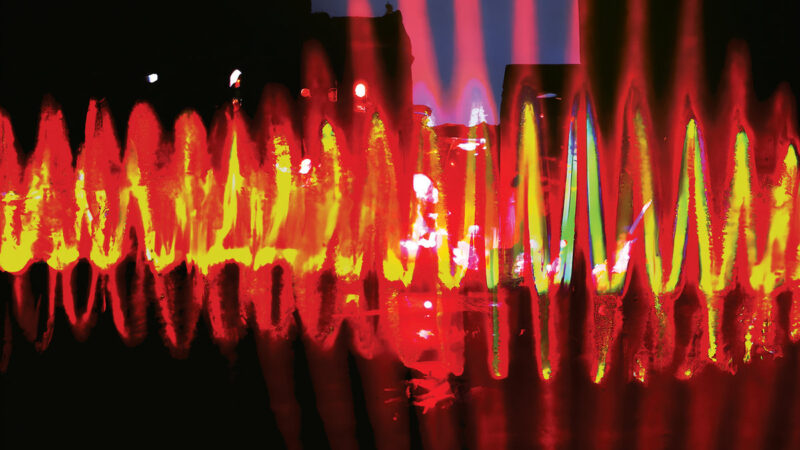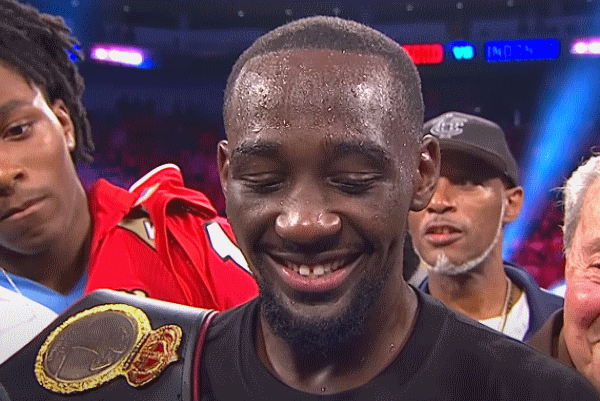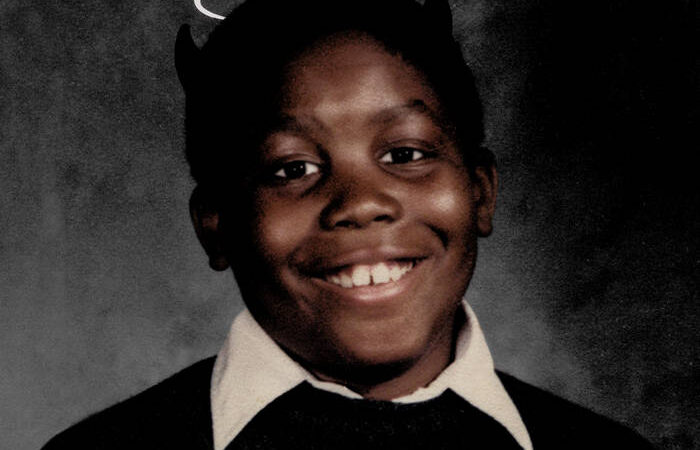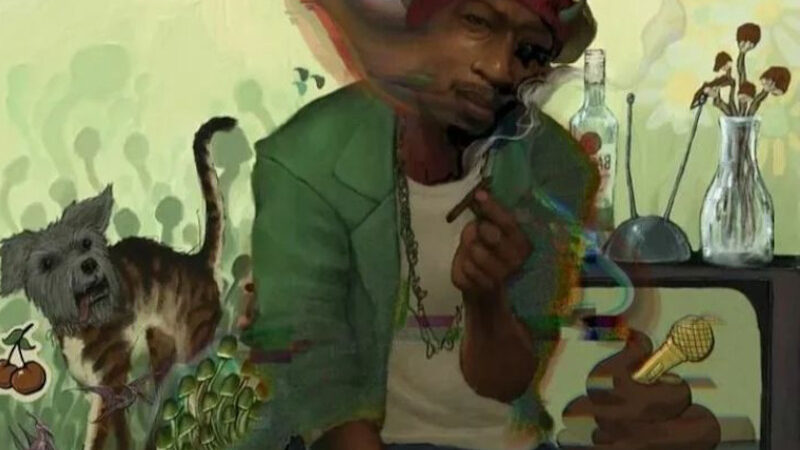Well before Frank “Superfly” Lucas or Leroy “Nicky” Barnes, Frank “Black Caesar” Matthews redefined the role of the Black gangster in New York’s underworld. At its peak, his organization controlled heroin traffic in 21 states. Even Italian Mafia chieftains stood in awe of its reach. Before it could expand any further, law enforcement finally caught up with its leader. However, he managed to slip from their grasp. In 1973, he skipped the country with as much as 15 million dollars in tow. He hasn’t been seen or heard from since.
The Frank Matthew’s story has remained a mystery for almost 4 decades. Over the past five years, true crime author Ron Chepesiuk and documentary filmmaker Al Profit have done exhaustive research into on the subject. All of their findings have been compiled into their long awaited joint venture ‘The Frank Matthews Story: The Rise and Disappearance of America’s Biggest Kingpin.’ The film is the first of two in-depth documentaries that attempt to put the Matthews legend into proper historical context. Both filmmakers recently sat down with Planet Ill to discuss the legend of America’s most elusive fugitive.
Planet Ill: I remember seeing trailers and advertising for this project as far back as 2007. Why’d it take so long to complete?
Ron Chepesiuk: That’s a good question. Actually, I was responsible for that. I started the project five years ago. After I had finished my book Gangsters of Harlem, I became intrigued by the Matthews story. Somebody approached me about doing a documentary and possibly a book, so I went with that guy for a while. He didn’t have what it took to complete the project. Then I had another person who said he could get the project completed. That didn’t work out. I had talked with Al previously about the Matthews project, and then last fall he approached me and encouraged me to get the project started. He wanted to work with me. I realized the problem with the project is that a lot of people were dying and subjects were increasingly difficult to find. It took five years or so before the project finally got off the ground.
Planet Ill: As you just said, there seems to be scant information available about Matthews. How did you manage to put together a reliable profile on him?
Ron Chepesiuk: What’s really amazing is that law enforcement sources are eager to talk about the project, because they’ve seen books and movies and documentaries about Frank Lucas and Nicky Barnes. They all say Frank Matthews was the biggest Black drug trafficker of that era in the United States. You see that on the documentary. We didn’t have problems with law enforcement. I had built up some sources over the years through my books and through research into Matthews. We were able to get some really good sources that knew Matthews. But really we just touched the surface. That’s why we say that this is part one of a two part documentary about the Frank Matthews story.
Al Profit: Ron laid tremendous groundwork with his five years of research 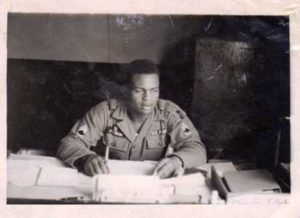 into this. I think that his earlier works, like Sergeant Smack and Gangsters of Harlem, allowed him to make contact with “street guys” who would be comfortable enough to talk with him. Also, we just got in the car and did legwork. One of the most interesting interviews we did was with a former Durham police officer. We just kind of showed up at his house and he happened to be home.
into this. I think that his earlier works, like Sergeant Smack and Gangsters of Harlem, allowed him to make contact with “street guys” who would be comfortable enough to talk with him. Also, we just got in the car and did legwork. One of the most interesting interviews we did was with a former Durham police officer. We just kind of showed up at his house and he happened to be home.
Once again, it’s a function of Ron’s great research but it’s a combination of him targeting some people and us tracking them down and lucking into getting some of them. I can see why no one had done one (a documentary on Frank Matthews) before. There was a lot of scattered information. As a matter of fact, the information was so scattered that even retired U.S. Marshal Mike Pizzi, who we interviewed, said that he now understands the case better after watching our documentary.” So that’s how far flung and complex it was. Even the law enforcement involved sometimes lost sight of the big picture, because there’s just so much going on in so many different places.
Ron Chepesiuk: Al had established a lot of sources in his research too. They weren’t directly related to this project, But we did get one gem in Courtney Brown Sr., who added a lot to the Las Vegas picture of Matthews and sort of verified the fact that he wasn’t going to go to jail and that he had already made up his mind to flee if he was going to be forced to go to trial or stay in jail too long.
Planet Ill: The story of Matthews rise and disappearance is one of the most amazing of its kind. Why isn’t it more well-known? Why are we just finding out so much more about it?
Al Profit: I was just reading the script for American Gangster last night. I had never really watched the movie because I didn’t care for it too much. As I was reading it, it really dawned on me what a brilliant thing they did with the Frank Lucas story. They took Frank Matthews, Ike Atkinson, Frank Lucas, and Nicky Barnes, and they made a composite character called Frank Lucas. They rolled tidbits of everybody’s story into it, even though Frank Matthews was bigger than all the rest. He was like the Keyser Söze of the Black underworld in the 1970’s.
You kind of didn’t know what to believe and what not to believe. Until you really went straight to the source, which was the law enforcement people, you really couldn’t verify that these stories you heard about Matthews were anything more than myths. There was really this guy who was controlling the whole eastern seaboard. It really didn’t sound believable. But then when you’re talking to DEA and federal prosecutors and they say, “Oh yeah, that’s what was going on.” I think it was just so hard to get information because the street people are so scattered and they only knew their own bit of the story. A guy in Baltimore might’ve known that Frank was bringing him heroin in Baltimore but he didn’t know what Frank was doing in Venezuela, Atlanta, New York, or wherever.
I think it was a difficult hidden, story. Then there’s the fact that he escaped and there was never a trial. Unlike all these other guys, he never got killed and he never got caught. So there was no closure, there was no trial, there was nowhere to go and get records. Frank Lucas and Nicky Barnes participated in their own documentaries, but there is no Frank Matthews to participate for this one.
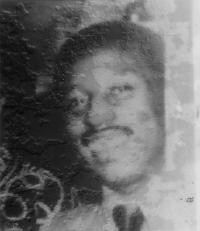 Ron Chepesiuk: There are a lot of records on Barnes and Lucas because I’ve researched them. There’s the trial of 18 of Frank Matthews associates in 1975, but the records are missing from that. So there’s very little information. Plus a whole lot of people who don’t want to talk about it. Matthews is a legend today. There’s a strong fear of violence, this urban legend that if you talk about Frank Matthews or reveal anything about him, he’s going to take care of you or your family. So there’s a little bit of that, but people are naturally suspicious. You show up and you don’t have any credibility with them until you gain their confidence. We did the Durham screening last March 23rd and already new sources are starting to come out of the woodwork, so we’re hoping to document that.
Ron Chepesiuk: There are a lot of records on Barnes and Lucas because I’ve researched them. There’s the trial of 18 of Frank Matthews associates in 1975, but the records are missing from that. So there’s very little information. Plus a whole lot of people who don’t want to talk about it. Matthews is a legend today. There’s a strong fear of violence, this urban legend that if you talk about Frank Matthews or reveal anything about him, he’s going to take care of you or your family. So there’s a little bit of that, but people are naturally suspicious. You show up and you don’t have any credibility with them until you gain their confidence. We did the Durham screening last March 23rd and already new sources are starting to come out of the woodwork, so we’re hoping to document that.
One of the big mistakes or blunders that law enforcement made which helped to keep Frank under the radar is that they never raised the reward. The reward was $20,000.00 dollars in 1973 and its $20,000.00 dollars today. Who the Hell’s going to turn in information or risk their lives to turn in Matthews for that amount of money? A counterpoint is the Whitey Bulger story. There was a two million dollar reward on him. Some woman in Iceland just happened to watch America’s Most Wanted and had met Bulger and his girlfriend in California and was able to finger him for the police.
So there are a lot of factors as to why this story has taken so long. Plus I think he’s kind of lucky (laughs). For some reason no one’s done it. I watched American Gangster (The BET series) for those three seasons and I kept saying “God, just don’t show Frank Matthew’s story” because I wanted to do it. And it never showed up. No one did a segment on Frank Matthews.
Planet Ill: Frank was a southerner. He was from North Carolina. How is it that he could go to New York and operate with Impunity? Did the other Black gangsters who were native to New York ever challenge him?
Al Profit: Well that’s an interesting question. The drug trade in New York was so massive that whatever any one of them was doing wasn’t impinging on whatever anyone else was doing in terms of beefing over territory. It’s really amazing. You have a guy that in his early 20’s comes up to New York. How was he able to move up to those levels so high? That’s the question. If I was going to make a movie about Frank Matthews, I might make him a CIA plant or something. I’m not proposing that’s what he really was. We have no evidence of that. It’s the only thing that would explain how this young guy pops up in New York, starts dealing with the French Connection, and then when he gets arrested he disappears. He would somehow be created by or in league with the government. So I don’t know. That’s an unanswerable question to me.
Ron Chepesiuk: You have to look at the personality of Frank too. He was one of the most entrepreneurial characters ever to enter the drug trade. If you look at our documentary, you’ll see time and again statements from law enforcement. Not from street guys boasting about their association with Frank, but from Law Enforcement. You can see this grudging respect for Frank as an adversary coming out. So he was an amazing guy that was literally trying to franchise his drug operation up the east coast. As Bill Callahan said, if he hadn’t have been stopped he might have set up an international network.
Also, Frank dealt with the Italians but he also had an international connection too, which sort of put him out of the way of a lot of the other big drug traffickers of the period. Also, he was the first one. Lucas and Barnes essentially came a little bit later, after Frank arrived on the scene. He was essentially the pioneer of the African American drug trade after the French Connection started to break up in the late 1960’s and early 1970’s.
Al Profit: Frank Matthews was a major trafficker by the late 1960’s, where Lucas and Barnes’s heyday was probably early to mid-1970’s.
Planet Ill: I’ve read many accounts of Frank Matthews where he was described as being rather flamboyant. We also know that he had a very expensive coke habit. How could someone like that fly under the radar for so long?
Al Profit: Yet another great question!
Ron Chepesiuk: I think one of the reasons was that they really didn’t take Black drug traffickers seriously. You remember, when Frank was starting to rise and establish his network, the Italians were still the focus of law enforcement radar. They are the ones that law enforcement thought was running the drug trade. We show this in the documentary when Jerry Miller, the head of the DEA investigation of Frank Matthews, said that they didn’t take Black drug traffickers seriously. That gave Matthews a great window of opportunity to develop his network. It took several months, even years, before Law Enforcement was able to get wind of his criminal activities. If it wasn’t for Joe Kowalski, the police officer who lived in the same apartment building on Clarkston avenue, taking note of all this unusual traffic coming into the apartment building, it would have been another ten years before Matthews would have shown up on the radar.
Al Profit: Also, I think that people kind of underestimate Matthews. You think of this stereotypical image of the drug dealer and he has this fur coat and he’s snorting coke. I think that Frank was very sophisticated and that he was a chameleon. He acted different ways with different people. Just like you hear the stories about how Frank showed up here or there and he had a purple fur coat on and this and that. Like we show in the documentary, the tutor that went over to the Matthews home five days a week at five PM to tutor his kids said that he appeared to be a regular businessman. He wasn’t running around in Superfly outfits and snorting coke on the dining room table. I think that he had different aspects of his character that he displayed with different people. He played whatever role he had to, and that’s probably what made him such a great businessman. It’s what made him be able to work with everybody from La Cosa Nostra (The Italian Mafia), to the people in Venezuela, to other Black drug dealers. Not just in New York, but all up and down the east coast and even in the south. He was like a Shakespearian character.
Ron Chepesiuk: He was bigger than life in the real sense. I’ve researched a lot of Gangsters, and he was very well liked. Al, can you recall anybody that really said anything bad about him?
Al Profit: No.
Ron Chepesiuk: It’s amazing. Even law enforcement was real complimentary about him. That takes incredible personality to be able to do that. If you can do it, imagine what you can do in the world of criminality, where it’s so cutthroat. You can deal with any kind of situation. That’s the way it was with Frank. The guy was just amazing. He was developing this incredible network, at the same time he had a different girl in every city and every borough in New York. We’re still uncovering girlfriends that he had. He was a bigger than life character, and Keyser Söze was a good one to describe. You’d have to dig deep in history to come up with other characters like that. There are very few people that I’ve met and studied in the criminal underworld that have the qualities that Frank had. That made him incredibly good at what he did.
Al Profit: The only parallel I can think of, and I wish I would’ve said this in the documentary, is Meyer Lansky.
Ron Chepesiuk: Right.
Al Profit: If Frank wasn’t Black, and would’ve melded into society a little bit more like the Jewish and Italians criminals did, he might have been like Meyer Lansky. Lansky was one of the largest criminals on planet earth. He really skirted the law and called shots and controlled things. He was the architect of La Cosa Nostra. For years, he was behind the scenes and could never really be brought to justice. That would be the closest parallel we could think of.
Ron Chepesiuk: To show you how that comparison is not farfetched, one of the things that we found is that they couldn’t really figure out what happened to Frank’s money. They know that he was putting money away in anticipation of one day having to escape. But to this day they don’t know what happened to the money. This is why I think Frank Matthews might even be a bigger character than Meyer Lansky in terms of crime: Frank could get on the street and take care of business. He was a tough guy. He could handle himself in a fight and people were scared of him. They liked him but they feared him, because they know he could take care of business.
Al Profit: I think what separates him even from a Meyer Lansky and Lucky Luciano, is that all those Jewish and Italian criminals were operating within a big infrastructure and they were supporting it. Meyer Lansky and Lucky Luciano helped each other. Frank Matthews was self-made. He came out of nowhere and built his own organization. He didn’t have a La Cosa Nostra to lean on, or to help him with political corruption or police corruption, or to give him money and muscle. He didn’t have 800 made men at his beck and order like Carlo Gambino. He was able to do a lot of the things that these guys did, in terms of a very sophisticated high level of criminality out of whole cloth. He just created it himself. He didn’t parrot someone else’s criminal organization and expand it. He started his own.
*Copies of The Frank Matthews Story: The Rise and Disappearance of America’s Biggest Kingpin can be purchased from http://www.frankmatthewsmovie.com/
Follow Malice Intended on Twitter @ http://twitter.com/renaissance1977
Follow Us on Twitter @ http://twitter.com/planetill
Join Us on the Planet Ill Facebook Group for more discussion
Follow us on Networked Blog



